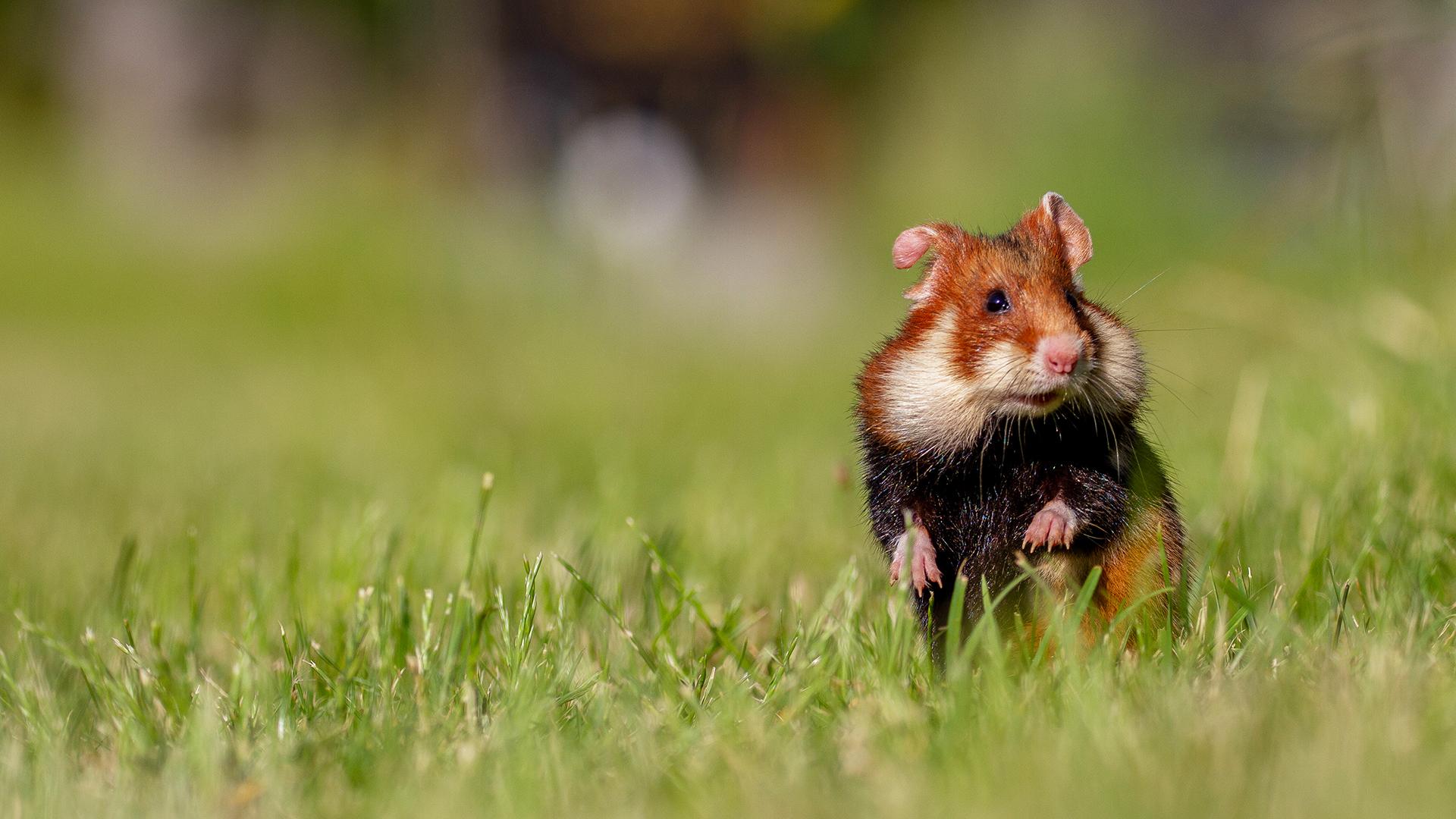National European Hamster Census 2020

In the framework of the Grassland-HU project, under a joint nature conservation action project of the Hungarian Natural History Museum and the Herman Ottó Institute Nonprofit Ltd., a census was carried out using questionnaires and interviews with the employees of the Hungarian Chamber of Agriculture and the National Park Directorates to learn about the status of the European hamster. The following is a brief summary of the results of the survey.
In 2020, the agricultural consultants of the Hungarian Chamber of Agriculture (HCA) and the rangers of the National Park Directorates (NPDs) were interviewed about the status of European hamster (Cricetus cricetus) in their work areas. We also received important information on the current range of hamsters from Miklós Lévai, the Executive Director Boros Ltd. The company specializes in controlling hamster populations. The survey was supplemented with site mappings.
The questionnaire is available here.
HCA received 121 completed questionnaires, plus 65 arrived from the NPDs. Based on these results, the hamster’s current range and population density can be estimated: compared to the data of 2015 survey, the range is reduced and is now limited to 288 settlements with their administrative areas. In the urban zones of 44 settlements, European hamster can be found in varying numbers, but there is a growing tendency compared to the previous survey.
What is the population density and what is the tendency?
Evaluation of the answers given in the questionnaires:
Where European hamsters can be found in Hungary, they occur at low densities (57%), but compared to the data of 2015 survey, the proportion of the settlements is almost the same where the population density hasn’t changed (39%), where it has shrunk (30%) and where it has increased (30%), which corresponds to a natural dynamic.
Have you already heard that the European hamster is a highly protected species and its conservation value is HUF 25.000?
Distribution of responses to completed questionnaires received from the HCA staff: 67% yes, 33% no
Distribution of responses in completed questionnaires received from NPDs staff: 91% yes, 9% no
The European hamsters was categorized by International Union for Conservation and Nature (IUCN) as critically endangered in 2020.
What is public’s perception of the hamster in the settlement, especially among farmers?
The rate of "bad" judgement and "very bad" judgment is almost the same in each settlement: 40-41%. The rate of "neutral" judgement is slightly higher on completed questionnaires received from HCA than on questionnaires received from NPDs.
Where can hamsters cause damage? How can be damage controlled?
The hamster can cause big damages, specially, to grain and corn. Only from 34 settlements answered about defence methods. However, trapping is often the most popular choice.
How big area was protected (against hamsters) by any measures in 2020?
While it was the least answered question, we can only pick a few examples from the questionnaires:
"In the area of Törökszentmiklós, Tiszatenyő, Kengyel, Szajol, a minimum of 2000 hectares of land is under protection against hamsters."
"In the area of Balmazújváros, Debrecen, Egyek, Hajdúböszörmény, Hortobágy, a minimum of 1000-1200 hectares of land is under protection against hamsters."
"In the area of Balmazújváros, Debrecen, Egyek, Hajdúböszörmény, Hortobágy, a minimum of 1000-1200 hectares of land is under protection against hamsters."
"In Baja region, a minimum of 50.000 hectares of land is under protection against hamsters."
"I have no information specifically on protection against hamster, but farmers use rodenticides developed against common vole quite often. Unfortunately, I have experienced several times that rodenticides were simply laid on the ground, making it available to other species."
How serious was the economic loss caused by hamsters, in 2019?
The most were unable to answer this question, so we just pick again a few examples from the questionnaires:
"In the region of Hódmezővásárhely, the proportion of loss is 20-80%."
"In the region of Egyek, the loss is between 5.000 and 30.000 HUF per hectares."
"In Nagykáta, in sowing period 10% of the seeds were damaged, but the exact loss can be hardly estimated."
Some experts from the comments received from the respondents of questionnaires:
"What is population density? – This question is very subjective. The population size of European hamster is very low to me and to the Eastern imperial eagle; to the farmers, even one burrow is too many."
"I left several questions blank, because I only have been able to provide replies, when/if a comprehensive species assessment/mapping/monitoring had been carried out. From the numbers of hamster seeing hit by cars or scamper alive, I can conclude that their species’ number could have grown, but this impression may also come from paying more attention to the presence of this tiny rodents."
"I think the European hamster is a very dangerous pest, and there is a need for protection against them to ensure a safe agricultural production."
"Remove from the red list of threatened species!"
Source: Hungarian Natural History Museum
Photo: Meszlényi Gergő